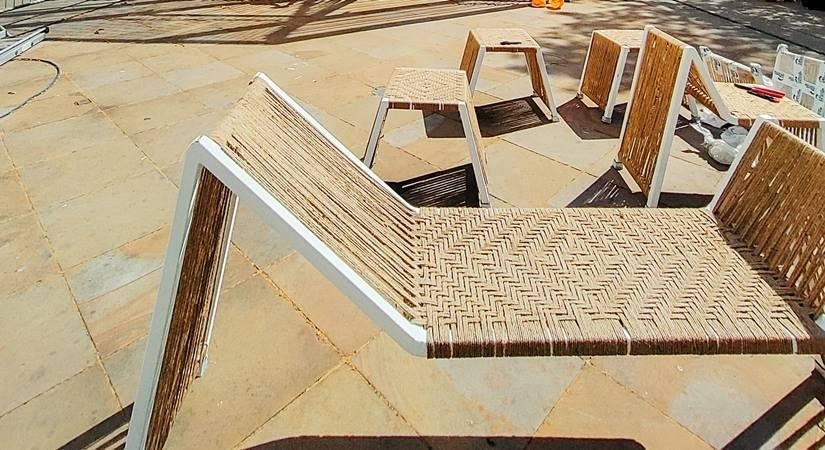The Indian pavilion is a multi-sensory evocation of the essence of a contemporary Indian city chowk – an open market at the junction of streets – through the visual metaphor of a charpai – a traditional woven daybed found across India. The charpai is a design icon that transcends time, and its weave is representative of Indian craft…reports Asian Lite News
The fourth edition of the London Design Biennale was artistically directed by the NieuweInstituut-the Dutch national museum and institute for architecture, design, and digital culture. The entirety of Somerset House, including the Edmond J. Safra Fountain Court and River Terrace, was taken over, and participants from across the globe were invited to imagine and enact new forms of international cooperation and participation-including with each other-through the medium of design.
The Design Village (TDV) and Studio Archohm designed the India Pavilion at the Biennale. 35 students from TDV attended the LDB and showcased their practical design intellect and thinking. These aspiring designers actively participated in the creation of the pavilion, gaining invaluable exposure on an international stage.
The fourth edition revolved around the theme of “The Global Game: Remapping Collaborations”. The India Pavilion showcased “Chowk&Charpai: An Urban Living Room”, a multi-sensory evocation of the essence of a contemporary Indian city curated by The Design Village and designed by Studio Archohm.
Speaking about the exposure Arpita Saraswat, a Postgraduate Student at the design village said “London Design Biennale as a platform has been enlightening for all of us coming together, to experience the work that leads us to global responsibilities. To see each concept being built for all of us to engage and experience. The conversations and research work through Eureka at a global level has motivated me to reflect upon. As a design student, it has been a transforming involvement for me. It has been an honour for us, the students, to bring the everyday collaborative and sustainable experience through our India Pavilion at the Somerset House.”
The Indian pavilion is a multi-sensory evocation of the essence of a contemporary Indian city chowk – an open market at the junction of streets – through the visual metaphor of a charpai – a traditional woven daybed found across India. The charpai is a design icon that transcends time, and its weave is representative of Indian craft.
The pavilion will stand as a large urban charpai sculpture, gently shading Somerset House as it basks in the British sun. The weave of the charpai renders a play of light and shade to make a street square – a chowk, where chance encounters take place. The oversized web of the charpai represents India – modern in its outlook, rooted in its culture.
Through the elements of touch, sound, sight, smell, and taste, the chowk represents Indian urbanity which adjusts and adapts through dense landscapes. Terracotta cups dot the facade and promise a “kullad chai” tasting experience – a testimony to the comforting warmth of Indian hospitality and craft. Urban furniture inspired by the Pavilion punctuates the area – these act as physical ambassadors and find a place in other pavilions at the Biennale. Inside, one can hear the humdrum of Indian streets, under a maze of exaggerated Charpoi weaves. Notes of “Petrichor” – the quintessential Indian smell of the first monsoon rain on mud developed by Boond from Kannauj, complements the experience. Matching the scale of the Pavilion, Puppeteers from Kayakalp Trust perform a story of the Mango fruit, posing questions on Climate Change.
“It was important for us to show various layers and complexities of narratives. Our country is multidimensional and therefore its true representation is hard to recreate in a singular inanimate manner. Our students have had the chance to work closely with artisans and professionals through this journey of putting together the India Pavilion, which makes it very special,” adds Mridu Sahai, Co-Founder of The Design Village.
ALSO READ-
